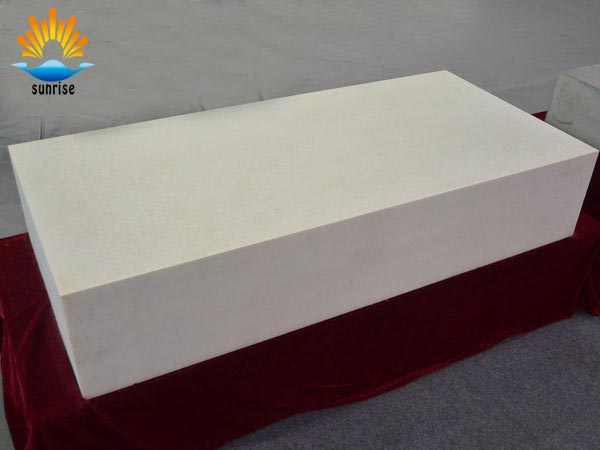Effect of Additives on Properties of Cast-cast Corundum Bricks
Date:2019-10-11 09:34 From:Zhengzhou Sunrise Refractory Author:admin
The electrofusion cast corundum brick (melted cast brick) is obtained by mixing industrial alumina and additives with ingredients, electro-melting in a three-phase arc, casting the melt into a graphite mold or a refractory mold, annealing and cooling, and then passing through Cutting, grinding, and finally making various shapes of cast-cast corundum bricks.
The cast-cast corundum bricks are divided into three types according to the crystal phase composition: the main crystal phase is divided into: the first one is α corundum phase, the second is α and β corundum phase, and the third is β corundum phase.
There are only two varieties of domestically cast fused cast corundum bricks. The main crystal phase of RA-M products is α and β corundum, and the main crystal phase of RA-H products is β corundum.

The products are divided into four types according to the casting method: PT is a common casting product, QX is a pouring casting product, MS is a dense casting product, and WS is a non-shrink hole casting product.
The pure alumina melt differs from the α-alumina density (3.99 g/cm3) by 25% at 2200 ° C, which causes the casting to shrink greatly during cooling and crystallization, making it difficult to obtain a dense and uniform casting, which is often introduced. A small amount of an additive such as Na2O is added to form βAl2O3. The specific gravity of β-Al2O3 is 3.30 g/cm3, which is only 10% lower than the density of the Al2O3 melt, and the total shrinkage rate is reduced by 15%. β-Al 2 O 3 is a polyaluminate having a hypothetical formula of Na 2 O·11 Al 2 O 3 . Calcium-containing β-Al 2 O 3 is most stable in vacuum.
